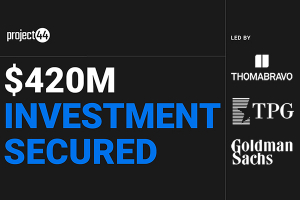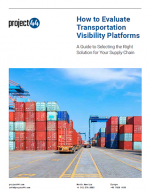What’s the Return-on-Investment of an Ocean Freight Tracking System?
In this paper, we aim to demonstrate how the strategic use of OFTS can drive tangible business benefits. In doing so, we will show how buyers, whether shipper, forwarder, or BCO, can determine how they should measure the return on investment of deploying an OFTS.
Bringing the Theory to Life
As a shipper, forwarder, or beneficial cargo owner (BCO), you know you need reliable visibility of your shipments.
With so many different data sources, having an Ocean Freight Tracking System (OFTS) is vital.
The demand for visibility has led to a variety of vendors and start-ups seeking to dominate the space and provide a solution.
The JOC branded this burst of activity the ‘freight visibility arms race’.
While competition and choice increase the chances of buyers finding a platform that meets their needs, the sheer variety also adds to insecurity in the decision-making process.
With multiple providers in the market, shippers, forwarders, and BCOs need to be clear on their own objectives to select the right vendor and solution for their requirements.
We have created an example use case, based on anonymized real-world data. The company in question is a leading global retailer with warehousing, manufacturing, and outlets across the world, as well as an ecommerce operation.
It relies on ocean logistics to transport the majority of its finished products from manufacturing to retail.
As manufacturing costs rise and customers demand better experiences at lower prices, the retailer needs to ensure that every part of its business is focused on being as efficient as possible. Therefore, our retailer wants to optimize its supply chain to manage resources and maximize margins.
To improve its understanding of key variables, such as carriers’ on-time performance, demurrage, and detention charges and shipping routes, which were impacting both its overall logistics costs and the ability to plan promotions and seasonal sales.
The company has identified five key areas it wanted to improve:
- Free time optimization to reduce demurrage and detention charges
- Carrier rate negotiation
- Inventory management
- Supply chain and shipping network optimization
- The use of employee time to focus efforts on more value-added activities
What’s Related



Favorites




